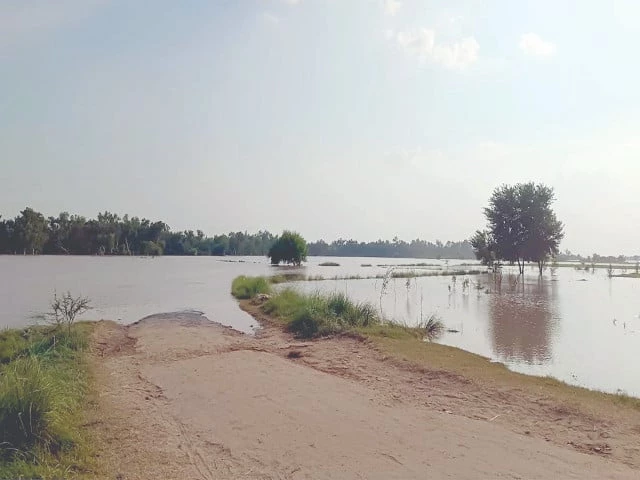Islamabad/Lahore:
The National Disaster Management Authority (NDMA), in coordination with the Punjab Provincial Disaster Management Authority (PDMA), has launched precaution evacuation efforts for communities along River Sutlej after a strong increase in water levels.
According to the National Emergency Operations Center, Alta in Harike increased to 122,890 CUSECs at dawn on Friday. The water flow continues to increase in GANDA Singh Wala and it is expected to reach the 120,000 CUSECs, while in the Suleimanki head it can approach 100,000 Cusecs.
It is forecast that a new monsoon system will enter the higher regions of the country from the Arabic Sea and Bengal Bay from Saturday night, followed by a wave of the west of August 23. The eighth spell of the monsoon is expected to bring strong rainfall on the upper areas of the Sutlej river basin, increasing flood risks.
The authorities said that water levels are expected to increase sharply in the next 24 hours due to the heavy rains of the monsoon and the water releases of the Indian reservoirs.
The flood prognosis division (FFD) Lahore reported that the Indus River is likely to experience high floods, while Sukkur is expected to see average levels of flooding.
It is forecast that Sutlej in Ganda Singh Wala will transport 70,000-80,000 CUSECs, categorized as average flood, while Taunsa’s flood can also face medium flood conditions.
Nationwide, the National Disaster Management Authority (NDMA) reported that from June 26 to August 21, the incidents related to the monsoon have charged 771 lives and left 993 people injured. Punjab registered 165 deaths and 584 injuries, Khyber-Pakhtunkhwa 465 deaths and 279 injuries, Sindh 42 deaths, Kashmir Azad 23, Gilgit-Baltistan 45 and Islamabad eight.
More than 4,700 houses were damaged or destroyed, 661 kilometers of roads and 234 bridges were affected, while more than 5,400 cattle perished. In the last 24 hours alone, 24 deaths, 15 injuries, 345 damaged houses and 380 losses of cattle, mainly in the Buner, Swat and Swabi districts of Khyber-Pakhtunkhwa due to sudden floods and landslides.
Help operations are ongoing, with 482 relief camps established throughout the country, protecting more than 29,000 displaced people and providing food and medical aid.




